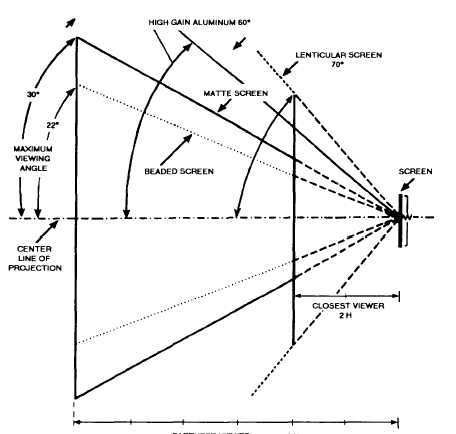The light source in the room should be behind, or at
least toward, the rear of the audience. This will reduce
the occurrence of glare spots and extraneous light,
which reduces contrast.
Front lights produce too much light on the screen,
and their glare is distracting. You should never schedule
an overhead projector presentation in the morning in a
room that has windows on the east side that cannot be
draped. Conversely, presentations should not be
scheduled in the afternoon in a room with windows on
the west side that cannot be draped.
Light sources that provide some illumination during
projection, but not directly on the screen, help maintain
a social atmosphere and permit taking notes. During
projection, the screen image highlights should be
brighter than any other surface within the viewer’s field
of view. “Hot spots” caused by reflections from shiny
surfaces or gaps in window covering should be
eliminated.
The projector should never be focused on the
screen without a slide! The absence of a slide on the
overhead projector while changing transparencies
results in an annoying glare. The darker the room, the
greater the glare and the greater the distraction to the
flow of the presentation.
None of the usual solutions to this problem are
satisfactory. When the projector bulb is switched on and
off, there is a risk of bulb failure, which can be an
awkward distraction. The shutter that fits just under the
lens can be used, but manipulation calls for a third hand
if transparencies are to be shifted quickly. Furthermore,
the shutter does not cut off the light from either the
ceiling or the operator’s eyes. The operator may be
temporarily blinded and possibly lose his place in the
script.
To solve this problem, you can use a simple device
that cuts off light at the aperture as well as pre-positions
the slides. This device, designed to work with any
overhead projector, is attached to the light table with
masking tape. A transparency is fed into the charnels
and centered over the aperture. While this transparency
is being shown, the next transparency is fed into the
Figure 6-9.-Screen relationships for audience seating.
6-27


